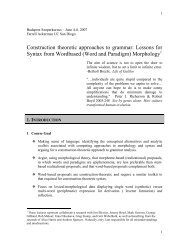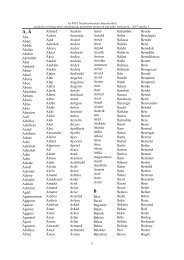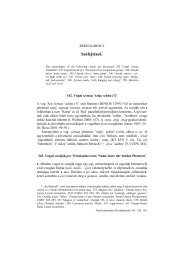Nyelvtudományi közlemények 95. kötet (1996-1997) - MTA ...
Nyelvtudományi közlemények 95. kötet (1996-1997) - MTA ...
Nyelvtudományi közlemények 95. kötet (1996-1997) - MTA ...
Create successful ePaper yourself
Turn your PDF publications into a flip-book with our unique Google optimized e-Paper software.
A szintagma alapú képzésekről<br />
KENÉSEI ISTVÁN<br />
I show in this paper that there is more complication in the issue of bracketing paradoxes<br />
than has so far been noticed. Two subtypes of possessional compounds are distinguished:<br />
adjectives suffixed -s/es/os/ös as well as the set of examples like transformational<br />
grammarian constitute 'traditional', i.e. lexical, bracketing paradoxes. Compounds<br />
suffixed -ú/ű and -i, as well as the cases reviewed in section 4, are mismatches<br />
of a completely different kind since they involve phrase-size items as bases for derivations.<br />
The evidence presented forces us to defer some apparently derivational process<br />
to a postsyntactic stage, where previously only inflectional rules had been supposed to<br />
be at work.<br />
I suggest that the affixes be regarded as heads that take maximal categories as<br />
complements. In these structures Richard Kayne's Linear Correspondence Axiom<br />
makes movement in effect obligatory in languages like Hungarian, which have rightheaded<br />
compounds. Head-movement and adjunction 'conspire' to yield the leftbranching<br />
structures, much along the lines of can opener in English.<br />
I have also raised the possibility of reviving the traditional functional notion of<br />
'attribute', which could have the role of defining a 'possessional' or a predicative relation<br />
exclusively inside a DP. 'Attribute' might then act as a functional category into<br />
which ordinary adjectives may (have to) move in DPs, and whose heads are overt only<br />
in languages like those reviewed here. Since this category is unavalaible in predicates<br />
(= VPs), the phrasal derivations discussed here cannot occur there.<br />
1. Bevezetés<br />
A jelen dolgozatban a morfológia egy érdekes határterületét tárgyalom, s ennek<br />
feltérképezését az irodalomban hagyományosan „zárójeles paradoxonoknak"<br />
nevezett szerkezetek segítségével igyekszem megvalósítani. Két, egymással<br />
szoros kapcsolatban álló konstrukciót mutatok be, melyek közül csak az egyik<br />
engedi meg, hogy egy szintaktikai szerkezethez, azaz egy szintagmához csatlakozzon<br />
képző. Ezeket „szintagma alapú képzéseknek" fogjuk nevezni, és<br />
kezelésükre azt fogjuk javasolni, hogy a szintaktikai komponenst követően is<br />
alkalmazzunk morfológiai műveleteket.<br />
Stump (1991) összefoglalása szerint a zárójeles paradoxonok valójában<br />
morfoszemantikai konfliktusok, azaz olyan konstrukciók, amelyek morfológiai<br />
vagy morfonológiai szerkezete nem felel meg a szemantikai szerkezetüknek. Az




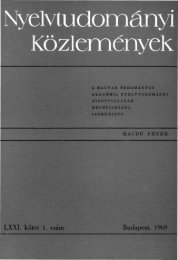

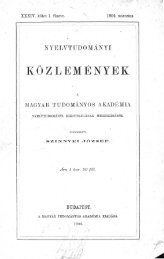
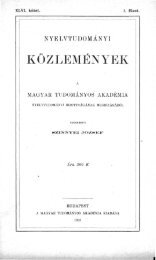
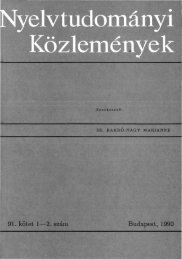
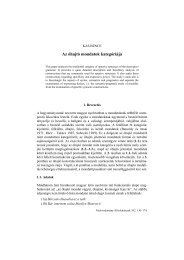
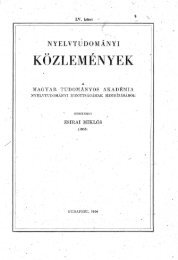
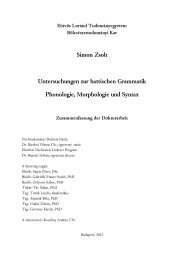
![Gósy Mária: A [p, t, k] mássalhangzók zöngekezdési ideje Bevezetés ...](https://img.yumpu.com/15682849/1/190x245/gosy-maria-a-p-t-k-massalhangzok-zongekezdesi-ideje-bevezetes-.jpg?quality=85)

